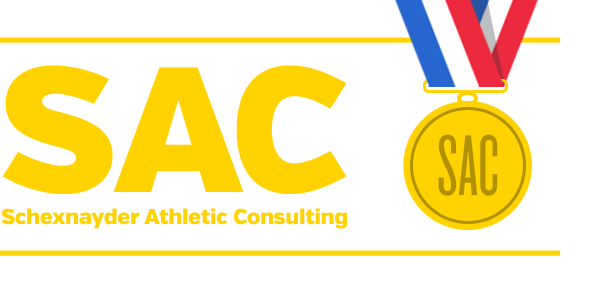
The Syndrome
by Boo Schexnayder
You see it all the time. A young athlete shows promise. Enters a program. Becomes good as a freshman. Becomes great as a sophomore. Then it begins.
Junior year falls just a little short of expectations, Nagging injuries may appear. Senior year continues that trend, or possibly results in a major injury. Coaches evaluate.
“Darn injuries”
“Tough luck”
“Kid couldn’t handle success”
“Senioritis”
It’s not luck at all. The injuries are a symptom of a bigger problem, not the problem themselves. Injuries and the failure to progress in the latter part of an athletic career are symptoms of a common syndrome we see repeatedly in athletics. So much so, that I decided to write about it.
The Root of the Problem
At the root of this problem is a fundamental misunderstanding of how training should progress during the course of an athlete’s career.
Young athletes aren’t yet fully developed. They do not yet show the levels of speed, power and strength they are genetically capable of. As a result of this, when they train, the power output levels they show are not very high.
A couple of years later, when they are more fully developed, they train with much more power output because of the talent they possess and training they have done.
The younger athletes, because of their lower levels of power output, do very little internal damage to their bodies as they practice, train, and compete. They don’t possess the high levels of athleticism needed to hurt themselves. Thus, they require little recovery time.
The more developed athletes are victims of the tools they possess. Their high power output levels produce more internal stress and damage. They therefore require more recovery time.
This calls for a natural adjustment of the training process over the course of an athlete’s career. When we strip the training program of the restoration piece and only look at the specific, high level speed/power/strength training they do, the needed adjustment becomes clear.
So What Do We Do About It?
From this bit of information, we can form a solid conclusion. Younger athletes can train more often than older athletes. Older athletes should train less frequently, but with higher intensity. Over the course of time, our training should become more and more quality based.
The grinding that got you good will not get you great, and will eventually be your own undoing. The program must change and develop into a series of strategically placed, high intensity exercise bouts.
Isn’t That a Logistical Problem?
This doesn’t mean the coach has to choose different, more intense speed/power/strength activities for the older athletes. The athlete’s level of development will produce the intensity… and make anything they do in the speed/power/strength world a high intensity workout. That’s because of the talent and levels of development they have achieved.
This doesn’t necessarily mean older athletes should get more days off. The vacancies left by the less frequent speed/power/strength training should be filled by more restoration based training… general strength, medicine ball, weight circuits, etc.
This doesn’t even mean you need to write a different workout for the older athletes. You can simply administer it differently. Rather than that older, developed athlete training all-out daily, the coach can help the athlete to pick spots for high level power expression.
For example, if you’re doing cleans three times a week, the older athlete can simply keep it easy and get in the reps on two of the three days…. but the third workout should be something special. Maybe on a different day you emphasize the squat, or the plyos, or the speed work. Pick your spots for periodic, well-spaced, high intensity training efforts. In the meantime, the freshmen may be grinding it out daily.
What if There Isn’t Much Talent?
We all have athletes who are not genetically gifted, but are still important to us and sports are important to them. Any time an athlete begins to approach their genetic ceiling, they will benefit greatly and see continued progress by switching to a more intense, but less dense workout regimen.
This quality-based philosophy is not just for the physically gifted, but any athlete who has progressed and begins to approach their genetic limits, whatever those limits may be.
The Syndrome. It doesn’t have to be this way.